
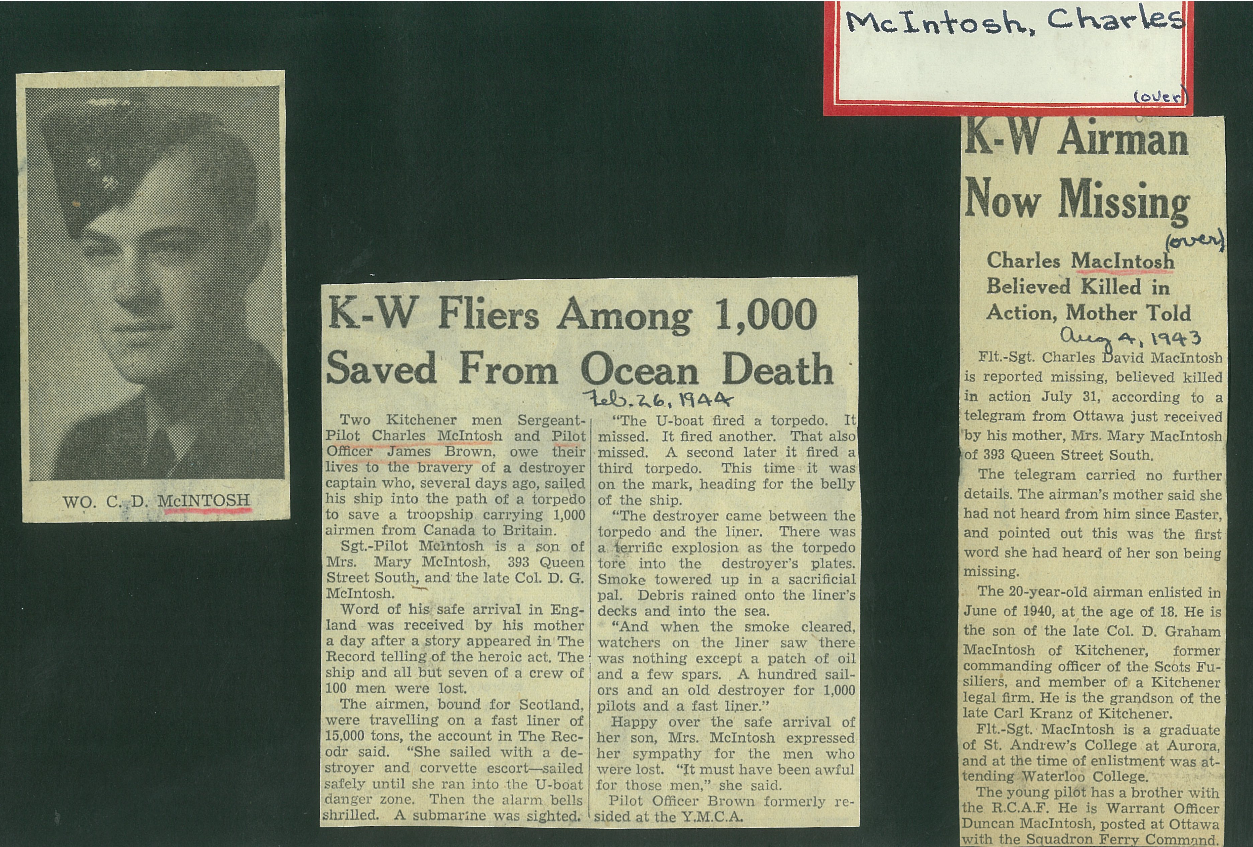
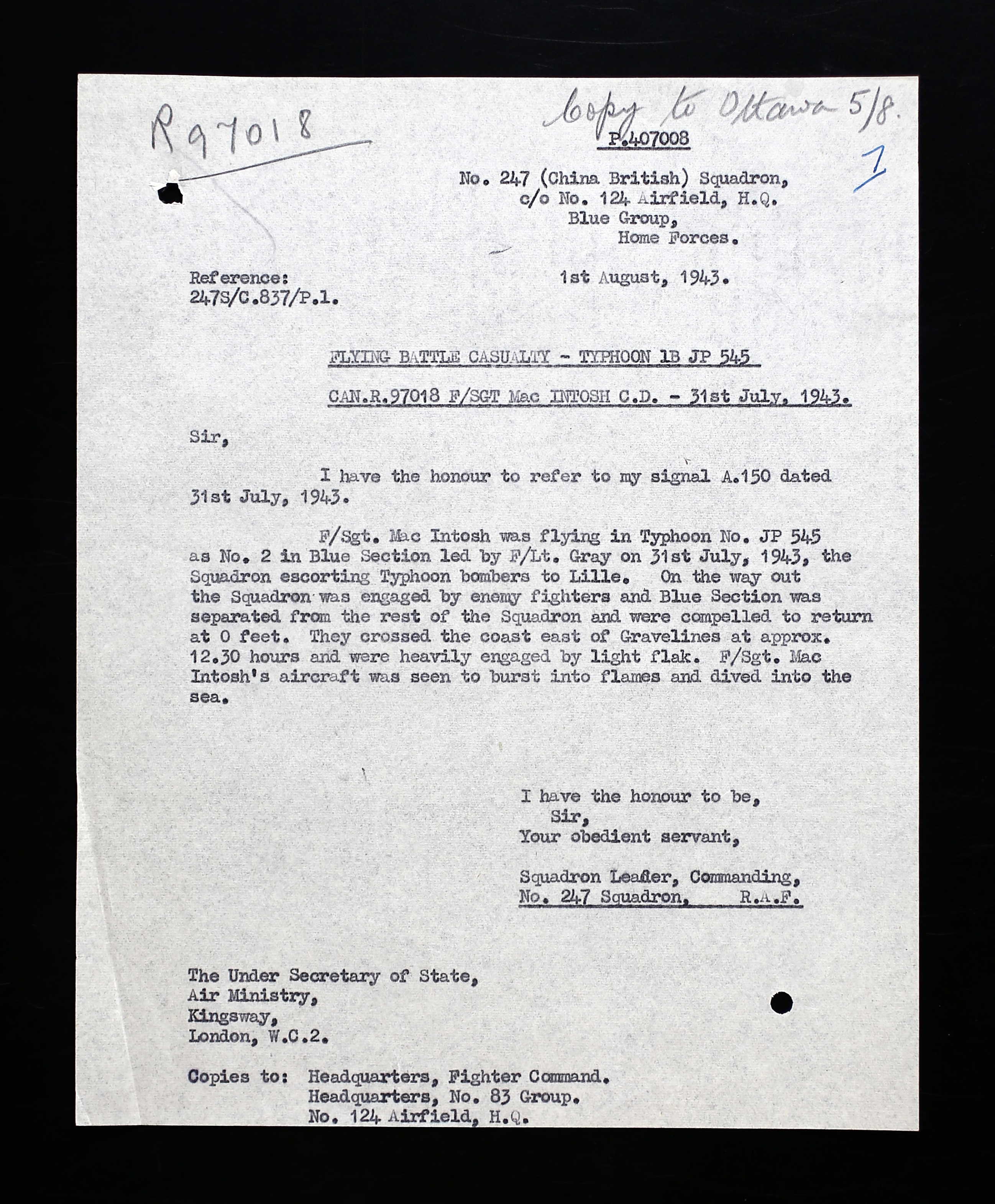
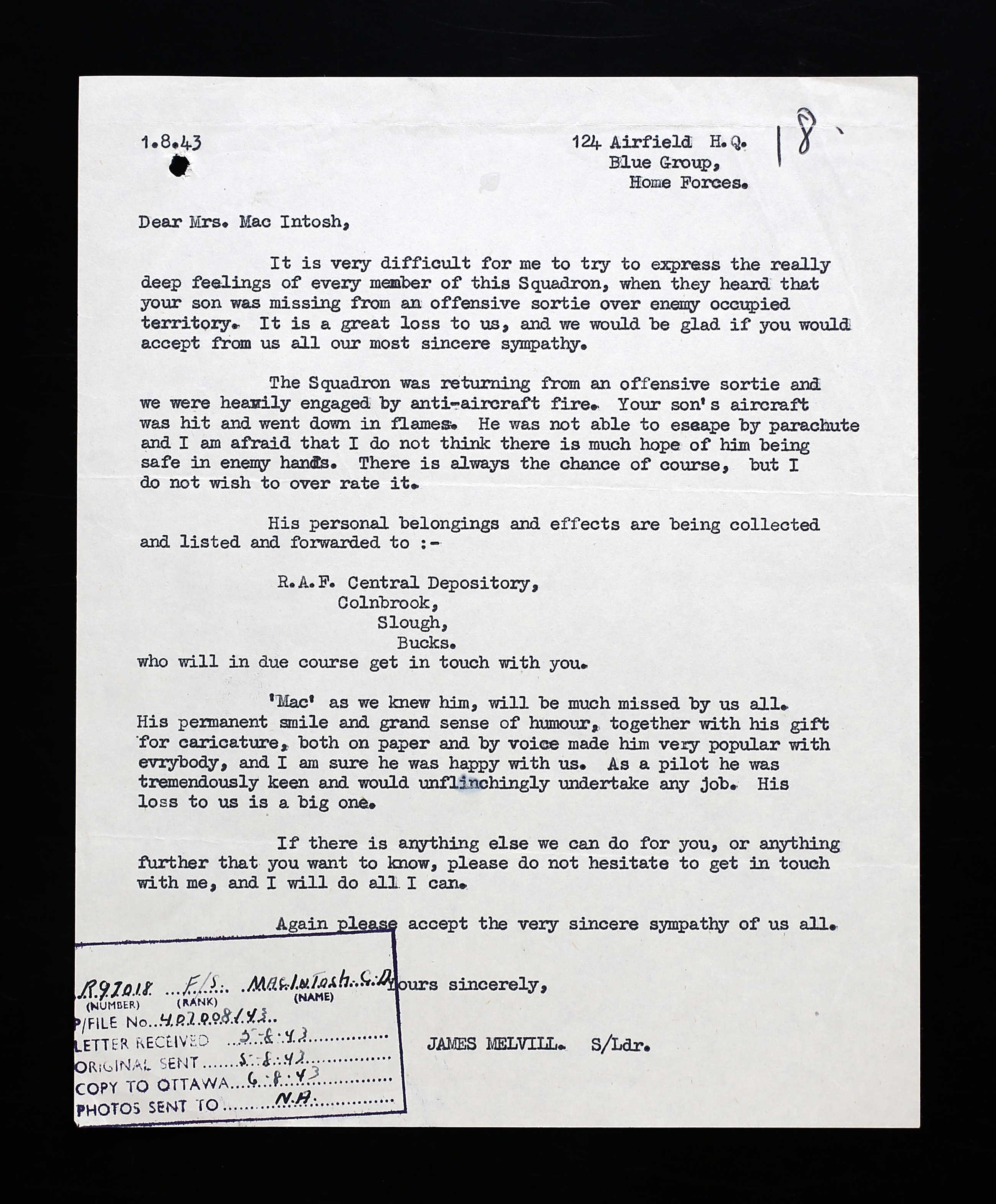
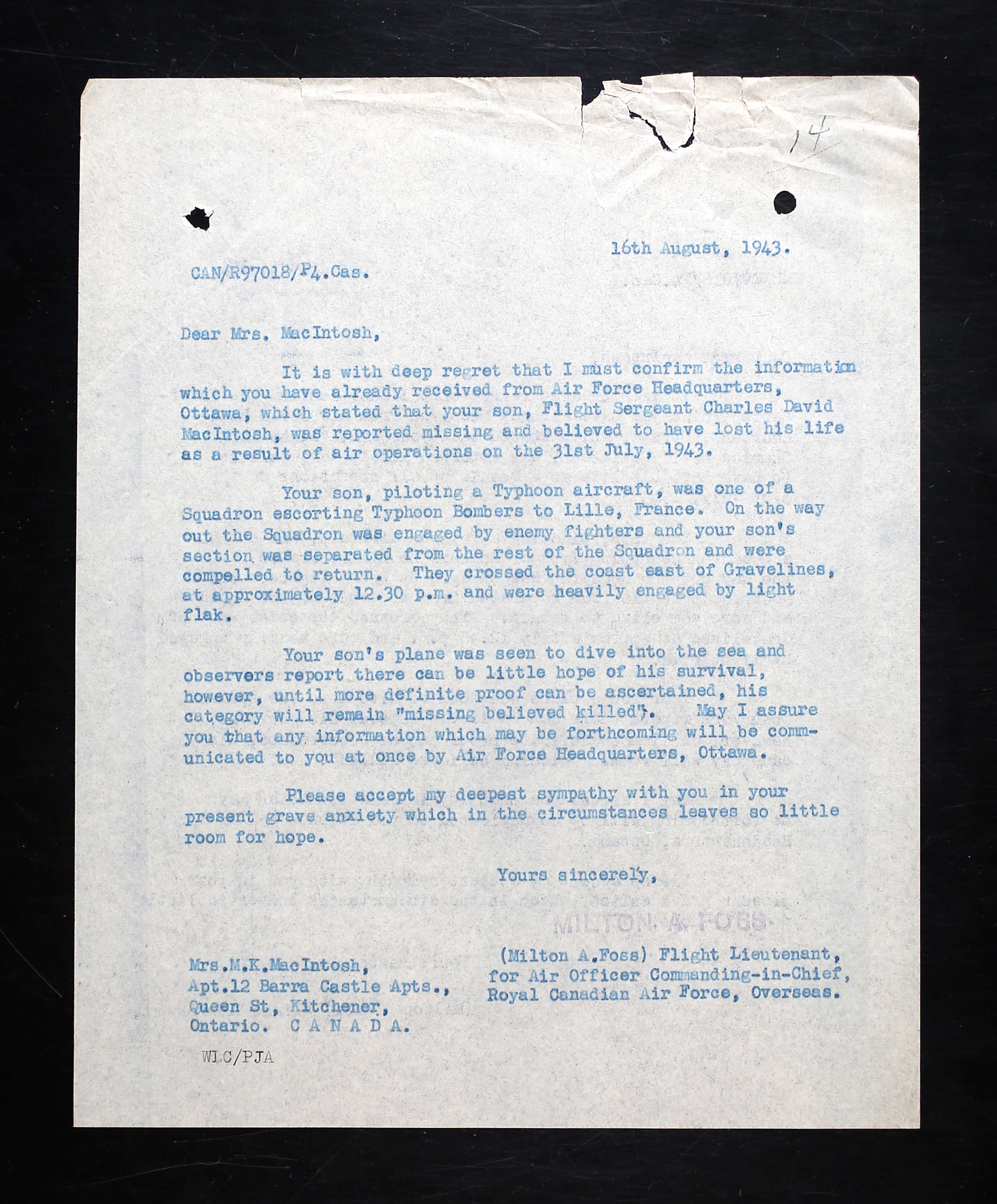
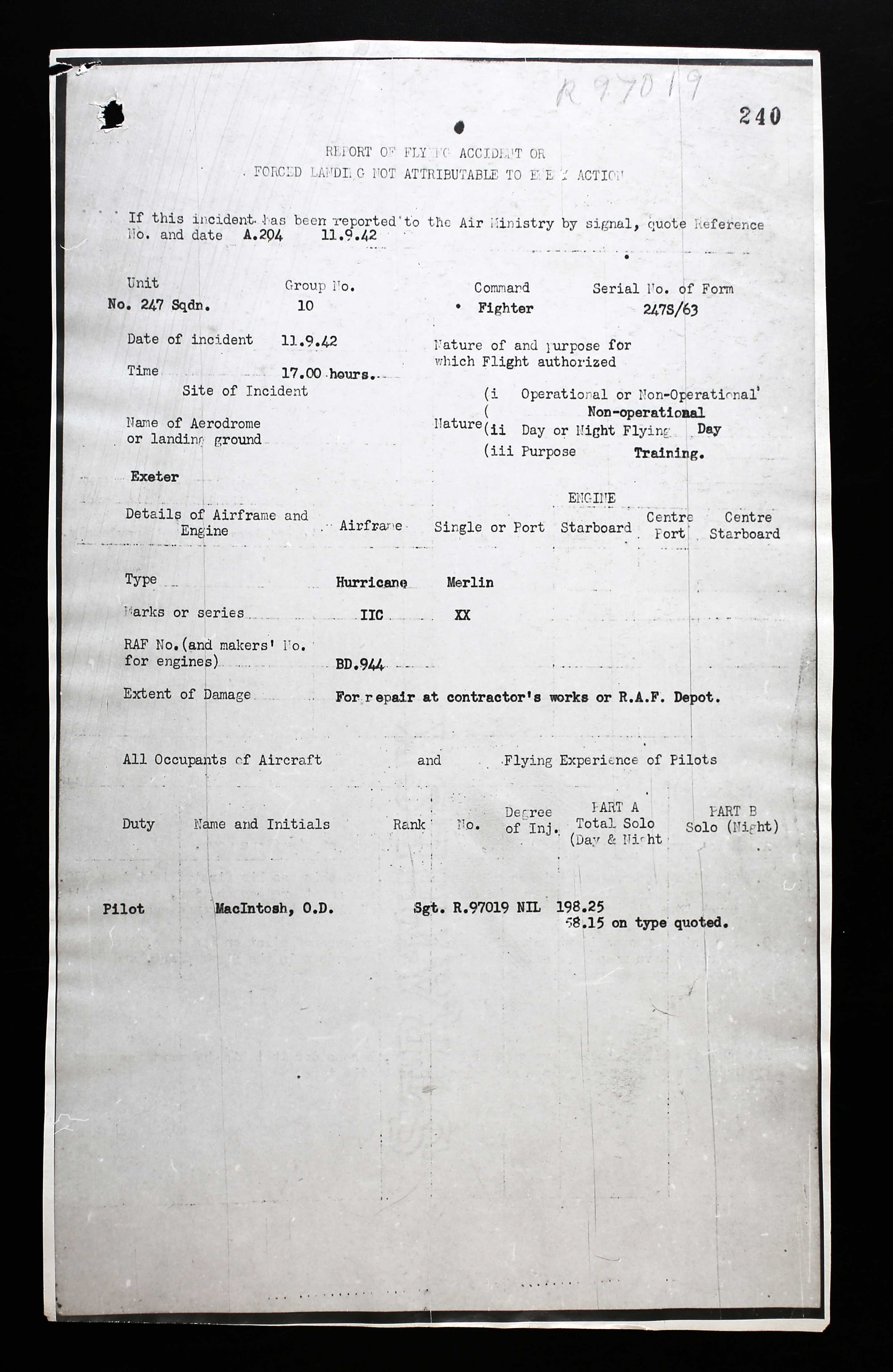
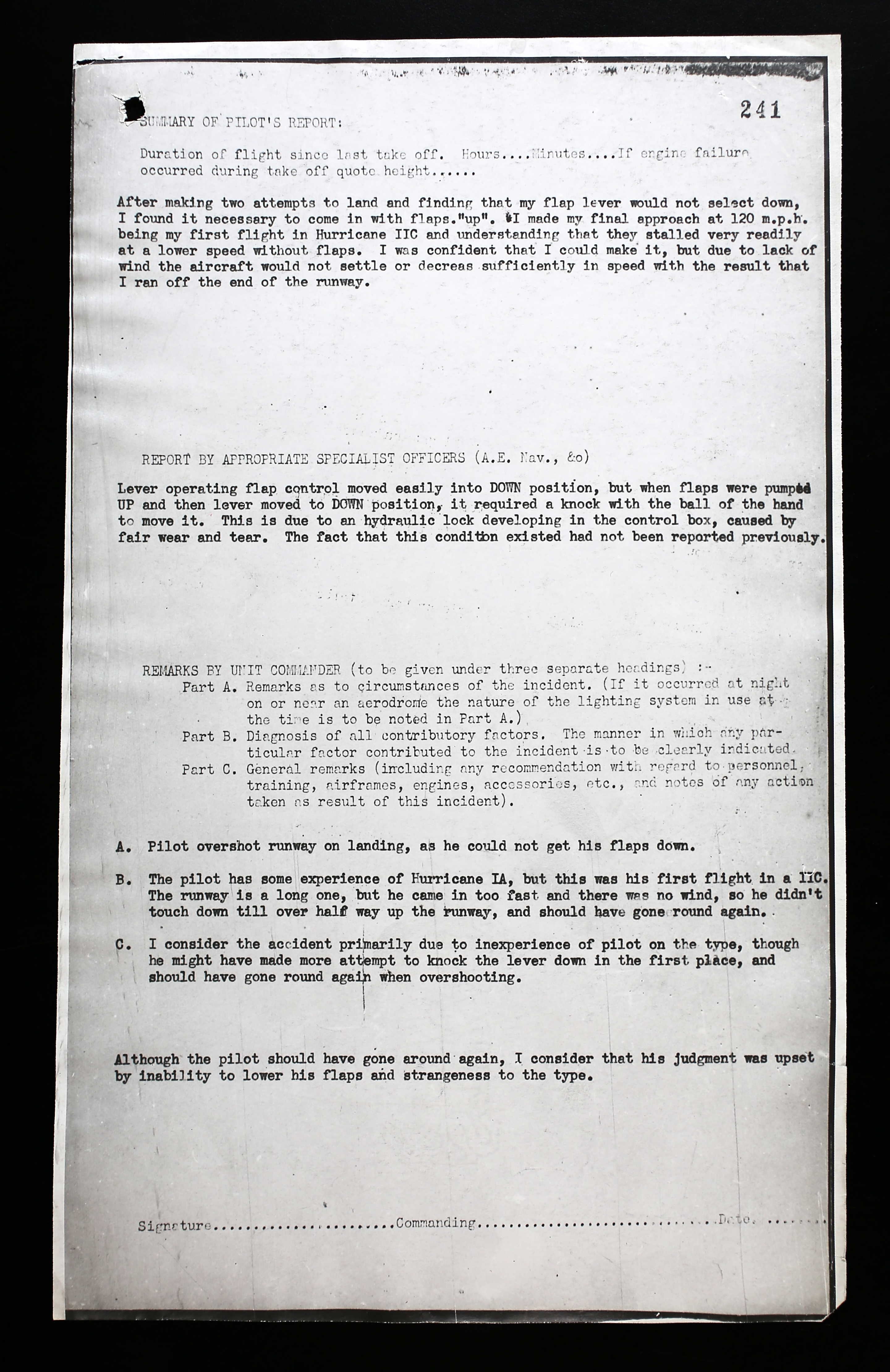
December 29, 1922 - July 31, 1943







Charles David MacIntosh was the son of Mary Katherine (nee Kranz) and the late Colonel David Graham MacIntosh, lawyer, of Kitchener, Ontario. He had two brothers: Duncan Graham MacIntosh, also in the RCAF, and a younger brother, Peter Douglas MacIntosh, still at home.The family was Presbyterian. His grandmother, Annie Kranz, was listed as next of kin.
Charles was a student at Waterloo College when he enlisted with the RCAF in February 1941. He enjoyed playing football, boxing occasionally. He stood 5’ 6 ½” tall, weighing 131 pounds. He had blue eyes and light brown hair. “Excellent type. Good background and education. Should make air crew material and develop considerably with training.” He smoked two cigarettes a day and indicated he did not drink alcohol. Other comments: “Very young lad. Average in emotional stability, general adjustment and self-confidence. Has good average intelligence.”
He began his journey through the BCATP at No. 1 Manning Depot, Toronto on April 22, 1941. He then went to No. 1 B&G School, Jarvis, Ontario May 17 until June 20, 1941. He then went to No. 3 ITS, Victoriaville, Quebec until July 25, 1941. “Very bright. Keen. Alert. Care-free. Neat. Very pleasant personality.” No. 17 EFTS, Stanley, was his next destination until August 13, 1941. “Appearance and discipline good. Good worker.” In Ground School: “Below average intelligence but has fine spirit. Is a plodder and will do anything to learn. Neat, pleasant and somewhat slow.” He was 29th out of 29 in his class. At No. 8 SFTS, Moncton until December 6, 1941. “Very low average pilot in all respects. He is rough, displays lack of airmanship and his reactions are purely mechanical. This pilot is doubtful service material.” Ground training: Young, well mannered, worked fairly hard and passed all examinations, obtaining average results.” Other comments: “Displays good qualities as a pupil; works hard but his ability is just average. His training was slow and inclined to be erratic. This ability just doesn’t seem to be there, but he could nevertheless try harder.” He was 47th out of 57 in his class.
He was sent to Halifax December 7, 1941 and travelled overseas and was at No. 3 PRC by February 20, 1942. He trained at No. 2 FIS and No. 5 AFU, then was transferred to 247 RAF Squadron August 26, 1942. He was known as ‘Mac.’
On September 11, 1942, Mac had a forced landing in Hurricane IIC BD944. [See document above.]
Mac kept a diary and drew some cartoons.
On July 31, 1943: “F/Sgt MacIntosh was flying in Typhoon No. JP545 as No. 2 in Blue Section led by F/Lt Gray…the Squadron escorting Typhoon bombers to Lille. On the way out, the Squadron was engaged by enemy fighters and Blue Section was separated from the rest of the squadron and were compelled to return at 0 feet. They crossed the coast east of Gravelines at approximately 1230 hours and were heavily engaged by light flak. Flight Sergeant MacIntosh’s aircraft was seen to burst into flames and dived into the sea.”
Mrs. MacIntosh filled out the Estates form April 30, 1944: “I believe the deceased made a will in the air force but am not sure. The only estate he had insofar as I am aware is $95 in War Savings Certificates which I was holding and the following held by the Toronto General Trust Corporation: 1x$100 Dominion of Canada Bond due February 1, 1948-52, a one-half interest in one share of the Capital Stock of the Waterloo Trust and Savings Co., value of whole share $100, the other half held by Douglas MacIntosh, and $21.34 in cash.”
In June 1952, Mrs. MacIntosh received a letter from W/C Gunn telling her that her son’s name would appear on the Runnymede memorial as he had no known grave.